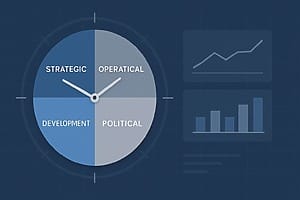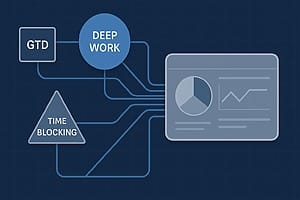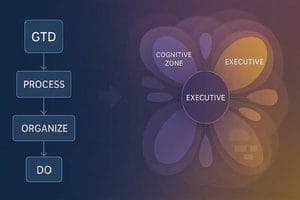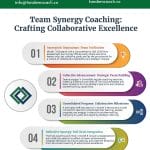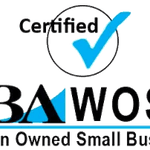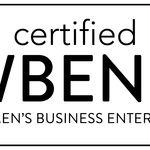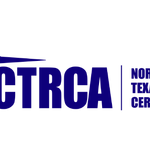If you’re running a business today, you know how quickly things change. Your market, your customers’ needs, and even your internal operations are constantly evolving at a pace we’ve never seen before.
You might have tried traditional change management approaches – those rigid step-by-step plans that tell you exactly what to do and when. But in today’s fast-moving world, these linear processes often leave you struggling to keep up.
The truth is you need a completely different way to think about and handle change. This is where Agile principles come in. In this article, we’ll show you how Agile thinking can transform how you handle organizational change.
Of course, putting these ideas into practice isn’t always easy.
That’s why at Tandem Coaching, we’re here to guide you through complex organizational changes with our Executive coaching services. We’ll help you develop your mindset and skills to lead lasting organizational transformation.
Book a 1:1 consultation with us today to get started!
What is Agile Change Management?
Agile Change Management represents a fundamental shift in how organizations think about and approach change.
Rather than treating change as a project to be managed, it embraces the Agile Manifesto’s core values:
- Prioritizing individuals and interactions
- Responding to change
- Continuously delivering value
Think of it as building an organization’s “change capability”—the ability to sense and respond to shifts in the environment naturally and effectively.
This approach draws from several key principles:
- Continuous Adaptation: Instead of trying to plan everything up front, you build your organization’s ability to evolve continuously through small experiments and learning cycles.
- People-Centered Change: Following the Agile value of “individuals and interactions over processes and tools,” you focus on building collaborative relationships and empowering teams to drive change from within.
- Systems Thinking: Understanding that change in one area affects the entire organization, you take a holistic view of how different parts interact and influence each other.
The goal isn’t to “manage” change but to create an environment where positive change emerges naturally through continuous learning, experimentation, and adaptation.
This means shifting from traditional change management, which focuses on controlling outcomes, to building your organization’s capacity for ongoing evolution.

Agile Change Management Examples
To understand Agile Change Management, we need to look at how organizations apply Agile principles to organizational transformation:
Continuous Delivery of Value
Rather than attempting large-scale organizational changes, successful companies focus on delivering incremental value through small, meaningful changes.
For example, when adopting new work methods, they might:
- Start with a single team or department
- Gather feedback continuously
- Adjust approach based on real outcomes
- Scale what works through evidence-based decisions
Welcoming Change
Organizations that excel at Agile Change Management embrace uncertainty and adapt their change approaches based on emerging needs.
This might look like:
- Adjusting plans based on employee feedback
- Modifying timelines to match organizational readiness
- Evolving change strategies as new information emerges
Cross-Functional Collaboration
True Agile Change Management breaks down silos between business units.
For instance:
- HR and Operations working together daily on workforce transitions
- Finance and IT collaborating on process improvements
- Leadership and front-line staff jointly designing new ways of working
Benefits of Implementing an Agile Change Management Process
Unlike traditional methods, Agile allows for more flexibility, better communication, and faster delivery of results.
Understanding the core benefits of change management is essential before diving into how Agile can enhance these advantages.
Here’s how an Agile change management process flow can benefit your change initiatives:
Faster Delivery of Change
When it comes to implementing change, speed matters more than ever.
A 2015 study revealed that managing change effectively is the most sought-after quality in CEOs – and for good reason. The same study found that 31% of CEOs lose their positions due to poor change management.
That’s why Agile’s iterative process is so valuable.
Instead of tackling massive changes all at once, you break them down into smaller, manageable tasks.
This approach helps you deliver results quickly and see what’s working (or not) right away.
Improved Flexibility and Adaptability
With the Agile change management framework, you can easily adjust plans in response to new information or external changes.
This flexibility ensures that your organization remains adaptable and can handle unexpected challenges, which are harder to achieve with rigid, traditional methods.
Enhanced Stakeholder Engagement
Agile encourages continuous involvement from stakeholders.
Before implementing any significant changes, you must establish an effective engagement plan for your leadership teams.
This structured approach ensures that you’re collecting feedback and actively incorporating it into your change initiatives.
By incorporating stakeholder feedback throughout the process, you can ensure that changes align with their needs, leading to higher buy-in and smoother implementation.
This keeps everyone on the same page and engaged from the start.
Better Collaboration
Agile organizational change management emphasizes collaboration across teams.
Regular check-ins, like daily scrums, ensure everyone involved knows what’s happening and can contribute to finding solutions.
This collaborative approach fosters faster problem-solving and minimizes misunderstandings.
Continuous Improvement
One of the core change management principles in Agile is regular reviews and retrospectives.
These evaluations help your team reflect on what worked and what didn’t, ensuring that each iteration improves on the last.
This process of constant feedback ensures your change initiative evolves effectively over time.
Check out this Enterprise Agile Coaching book if you want to create lasting organizational change instead of temporary fixes. It is a practical guide that shows you how to implement sustainable change through an invitational coaching approach.
Written by master coaches Cherie Silas and Alex Kudinov, along with enterprise coach and PhD Michael de la Maza, this book offers proven strategies for effectively transforming your organization.

Key Principles of Agile Change Management
The principles of Agile Change Management, which come directly from the Agile Manifesto, are applied to how organizations evolve and transform.
Let’s look at how these principles work in practice:
- Early and Continuous Value Delivery: Don’t wait to see results when making organizational changes. Start small, but start quickly. For example, if you’re implementing a new customer service process, begin with one team or department, learn from their experience, and then expand based on what works.
- Work Together Daily: Change isn’t something you do to people—it’s something you do with them. During the change process, ensure that business leaders and teams work together every day. This might mean daily stand-ups, weekly check-ins, or regular feedback sessions to keep everyone aligned and moving forward.
- Embrace Change at Any Stage: Markets shift. Customer needs evolve. New opportunities emerge. Instead of sticking rigidly to your original change plan, stay flexible. If you discover halfway through your transformation that your teams need a different approach, adapt your plan. Good changes today are better than perfect changes tomorrow.
- Build Around Motivated People Trust your teams to find the best ways to implement change in their areas. Your role is to give them the support, resources, and environment they need to succeed. When people feel ownership of the change, they’re more likely to make it stick.
- Keep Communication Simple: Face-to-face conversations always beat lengthy email chains and formal documents. Create opportunities for direct dialogue about the change, whether in person or through video calls. This helps catch misunderstandings early and builds stronger buy-in.
- Make Progress Visible: Focus on tangible outcomes rather than just activities or plans. What’s actually different in how people work? How has customer experience improved? These concrete changes are your true measure of progress.
- Maintain Sustainable Change: Avoid the temptation to push too hard, too fast. Change should happen at a pace your organization can maintain over the long term. This helps prevent burnout and ensures changes stick.
- Excellence Matters: Pay attention to the quality of your changes, not just their speed. Whether you’re updating processes, implementing new tools, or shifting team structures, do it well. Excellence builds trust and makes future changes easier.

Agile Change Management Models and Frameworks
When you’re thinking about Agile Change Management, forget everything you know about traditional change frameworks.
Instead, imagine building an organization that can adapt as naturally as a tree bends with the wind.
This kind of adaptability comes from understanding and applying four fundamental concepts that work together:
The Agile Manifesto: Your Guiding Principles
Although the Agile Manifesto originated in software development, its wisdom applies to any organizational change.
At its core, it emphasizes four key values:
- Putting people and interactions before processes and tools
- Creating working solutions instead of perfect documentation
- Collaborating with stakeholders rather than negotiating contracts
- Responding to change instead of sticking to a plan
In practice, this means:
- You’ll spend more time talking with your team than creating detailed plans
- You’ll test ideas quickly rather than waiting for perfect solutions
- You’ll adapt your approach based on what you learn
- You’ll trust your people to make smart decisions about their work
Lean Thinking: Creating More Value with Less Waste
Think about the last time you cleaned out your garage.
You probably found things you’d forgotten about, stuff you never use, and processes that could be simpler.
Lean thinking applies this same idea to your organization but in a structured way.
The five key principles of Lean are:
- Define Value: What do your customers actually care about? This becomes your North Star.
- Map the Value Stream: Look at every step in your processes. Which ones truly add value?
- Create Flow: Make value-adding work move smoothly without getting stuck.
- Establish Pull: Only do work when there’s a real need for it.
- Seek Perfection: Keep improving, but remember that “perfect” is a journey, not a destination.

Systems Thinking: Understanding Your Organization’s Web
Your organization isn’t just a collection of departments and processes – it’s more like an ecosystem where everything affects everything else.
This is what systems thinking helps you understand.
As Evan’s Theory of Agile Constraints tells us: “An organization can only be as agile as its least agile division.“
This means:
- A change in your IT department might affect how HR operates
- Improving one process might create bottlenecks elsewhere
- The solution to a problem might lie far from where the problem appears
When you’re making changes, you need to:
- Look for connections between different parts of your organization
- Understand how changes might ripple through the system
- Identify the real constraints holding back improvement
The PDSA Cycle: Learning Through Experimentation
The Plan-Do-Study-Act cycle is your practical tool for making changes while managing risk.
This is your “scientific method” for organizational change:
Plan:
- Form a clear hypothesis about what might work
- Define what success looks like
- Decide how you’ll measure results
Do:
- Try your idea on a small scale
- Collect data about what happens
- Document unexpected events or outcomes
Study:
- Analyze your results thoroughly
- Compare what happened to what you expected
- Look for unintended consequences
Act:
- Decide whether to expand, modify, or abandon the change
- Share what you learned with others
- Plan your next experiment
The beauty of PDSA is that it makes failure useful. Every experiment, whether it succeeds or fails, teaches you something valuable about your organization.

How to Implement Agile Change Management Process
Implementing Agile Change Management isn’t about following a rigid playbook of change management activities.
Instead, it’s about embracing a new way of thinking about and approaching change.
Here’s how you can get started with this journey.
Begin With Your Current Reality
Remember the first principle of Agile change – you start where you are, not where you wish you were.
First, take a good look at how your organization currently works:
- What processes do you already have in place?
- Where do things tend to get stuck?
- Which teams collaborate well, and which ones don’t?
You’ll want to map out your value streams and track how work actually gets done.
Look for places where work sits idle or gets caught in approval loops. These are your opportunities for improvement.
Here is a real example to show you what this means:
Imagine you’re leading a marketing department that wants to become more agile. Instead of immediately implementing new tools or processes, you first map out how your team currently handles campaign creation:
Current process:
- Campaign ideas come from quarterly planning meetings
- Each idea needs approval from three different managers
- Design team has a four-week backlog
- Content team works in isolation from designers
- Final approval takes two weeks
- Customer feedback only comes after the campaign launch
Looking at this reality, you spot several opportunities:
- Multiple approvals causing delays
- Disconnect between design and content teams
- Long wait times for work to begin
- Late customer feedback that can’t influence the campaign
This is your real starting point. Maybe you’ll start by reducing approval steps or having design and content teams work together.
The key is that you’re working with what exists rather than trying to create an ideal process from scratch.
Create a Learning Environment
Your organization needs to become like a scientific laboratory – a place where it’s safe to try new things and learn from what happens.
This is about changing our approach from “we’ve always done it this way” to “let’s see if this works better.”
To build this environment:
Start with small experiments. Maybe you try a new meeting format or a different way of handling project approvals.
The key is to:
- Form a clear hypothesis (“We think doing X will lead to Y”)
- Test it in a limited way
- Measure what actually happens
- Share what you learned with everyone
Regular feedback sessions are crucial. These aren’t your typical status meetings—they’re opportunities for everyone to share what’s working, what’s not, and why.

Optimize Your Work Flow
Think of your organization as a river system. Your goal is to ensure a smooth workflow from start to finish without getting stuck in stagnant pools.
Here’s how to improve your flow:
Identify where work tends to pile up. These are your constraints – the parts of your process that limit how fast everything else can move.
Clearing these bottlenecks helps everything move more smoothly.
Some practical steps you can take:
- Break large projects into smaller chunks that can move more easily
- Reduce the number of approvals needed for routine decisions
- Create clear “done” criteria for each stage of work
Empower Your Teams
Self-organizing teams are at the heart of agility.
This doesn’t mean chaos—it means setting clear boundaries for teams and trusting them to determine the best way to work within those boundaries.
To make this work:
Give teams real authority to make decisions about their work. This means they can:
- Choose how to accomplish their goals
- Decide when to ask for help
- Make improvements to their processes
Your role shifts from directing to enabling. Help teams by:
- Removing obstacles they identify
- Providing resources they need
- Connecting them with other parts of the organization
- Supporting their decisions
Building strong, self-organizing teams requires a foundation of trust and mutual respect.
Successful Agile organizations invest time building trust within their Agile teams, as trust is essential for true empowerment and sustainable team performance.
Make Improvement Part of Daily Work
The most successful organizations make improvement a habit, not a special event.
Here’s how to build this habit:
Set aside regular time for reflection and improvement. This could be:
- Daily team check-ins
- Weekly process reviews
- Monthly strategy adjustments
Use the PDSA (Plan-Do-Study-Act) cycle we discussed earlier for all improvements:
- Plan: Identify a specific change you want to make
- Do: Try it out on a small scale
- Study: Look at what actually happened
- Act: Decide whether to expand, modify, or abandon the change
The key is maintaining a sustainable pace. Don’t try to change everything at once; instead, focus on making steady, consistent progress over time.
Need help with the best way to manage changes with Agile thinking? Contact us about our Executive Coaching solutions and Organizational Coaching to discuss your challenges and potential solutions.
At Tandem Coaching, we offer personalized guidance that helps you develop the skills necessary to inspire your team, embrace flexibility, and drive meaningful progress in your organization.

Challenges in Agile Change Management
That being said, you may encounter several key challenges during the Agile change management implementation phase.
A thorough change management risk assessment can help you identify and prepare for these potential obstacles early in your transformation journey.
Let’s look at some common obstacles:
- Resistance to Change: Many individuals feel threatened by change, leading to pushback at all levels. Addressing concerns and highlighting benefits is crucial for gaining acceptance.
- Lack of Leadership Support: Success relies on backing from senior management. Without their commitment, securing resources and support becomes challenging.
- Resource Constraints: Limited time, budget, and personnel can hinder effective change implementation. It’s essential to identify and allocate an Agile budget strategically to support your initiatives.
- Communication Breakdowns: Miscommunication can lead to confusion and resistance. Maintaining clear and open communication is essential for ensuring everyone stays aligned.
- Cultural Barriers: An organization’s culture may resist the collaborative nature of Agile. Overcoming entrenched cultural norms requires a thoughtful approach to change.
- Unclear Change Management Role: Agile change management often lacks a defined role for change managers, leading to ambiguity in responsibilities. Clearly outlining these roles can improve the effectiveness of the change process.

Frequently Asked Questions (FAQs)
Before wrapping up, here are the most frequently asked questions about Agile change management:
What is the Role of Leadership in Agile Change Management?
Leadership in an Agile environment is about creating the right conditions for change to emerge naturally.
Instead of directing every move, your role as a leader is to:
- Remove obstacles that prevent teams from adapting
- Create psychological safety so people feel comfortable experimenting
- Model the behavior of continuous learning and adaptation
- Support teams in making decisions close to where the work happens
- Help connect different parts of the organization to enable better flow
What Are the Key Metrics for Measuring Agile Change Management Success?
Success metrics should focus on business outcomes and organizational impacts.
These might include employee adoption rates, stakeholder satisfaction levels, improvement in business performance measures, and the sustainability of implemented changes over time.
Monitoring these change management metrics helps you:
- Understand the real impact of your change initiatives.
- Identify areas needing additional support
- Demonstrate the value of your transformation efforts to key stakeholders.
How Do You Incorporate Agile Change Management Into Your Current Change Initiatives?
Transitioning to Agile Change Management starts with a mindset shift in your organization. Instead of viewing change as a project to be managed, help your teams see it as a natural part of their work.
You can also benefit from our professional change management coaching program during this transition to help guide your teams through this fundamental shift in thinking and working.
The key is to apply Agile principles to the transition itself:
- Start by understanding your current work style.
- Then, based on your observations, make small, experimental changes.
Let teams learn from these experiments, adapt their approaches, and gradually develop new habits.
Conclusion
Dealing with organizational change through Agile principles requires a deep understanding of both human dynamics and business realities.
While frameworks and methodologies can guide you, true success comes from building an organization that can adapt and evolve continuously.
Leading this kind of transformation isn’t easy – that’s where expert guidance can make all the difference.
At Tandem Coaching, we work with executives and leaders like you who drive significant organizational changes.
Our executive coaching program provides you with one-on-one guidance to develop the strategic thinking, emotional intelligence, and leadership presence needed to successfully implement and sustain change.
Schedule a free consultation with our expert coaches and discover how executive coaching can accelerate your success!



